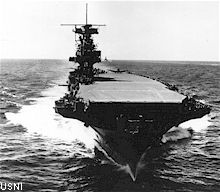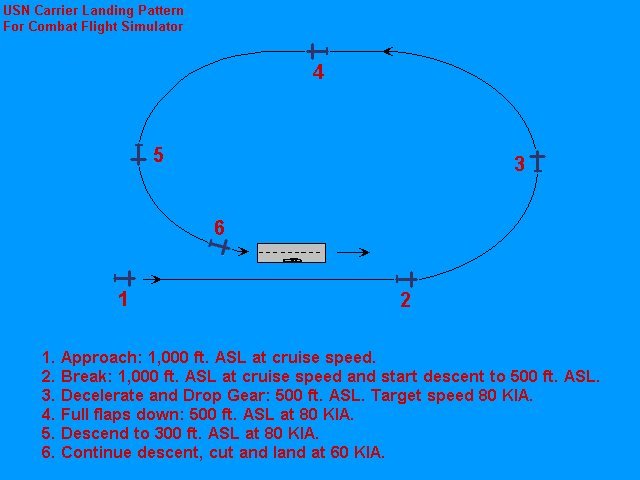|

Carrier
Landings and Take Offs are Basically controlled crashes. A scary
thought to those of us who are used to nice long runways to set
down on. The object is to put a little hook around an even littler
wire to suddenly stop the aircraft before it goes off the other
end of the deck. But before all that happens there are a few things
that need to take place first.
- Open
the Canopy: If things go wrong..you want to be able to get out
as fast as you can. Things happen really fast around a carrier
and any delay could mean your life.
- Deploy
the Tail Hook: This one is obvious. If the hook isn't down, then
you aren't going to get stopped in time. DO NOT attempt a carrier
landing if your tail hook won't deploy..instead ditch or fuel
permitting divert to a landing field. The carriers in CFS2 don't
have Crash Nets.
- Deploy
Flaps and Gear: Another obvious one. Flaps should be deployed
all the way down to help slow the aircraft to approach speed.
Flaps help the wing generate lift at lower speeds by increasing
the wing arch and wing area. However, if they won't deploy and
the gear and tailhook do, attempt the landing..but be ready on
the throttle..should you stall or come in too fast, full throttle
should get you back up into the air. If the gear don't come down,
DITCH.
- Slow
to Approach Speed: In the Corsair this is about 115 mph with full
flaps. Keep an eye on your vertical speed and Glide Slope. In
single Player this is pretty easy since you have a landing Signals
Officer directing you in. In multiplayer you don't so get used
to doing it on your own.
- Aim
For The Wires: As you are about to pass over the end of the deck..chop
the throttle all the way back, Let the nose fall and flare the
aircraft. If done correctly you should catch one of the three
arrestor wires and be brought to a full stop. If you miss, Go
full Throttle Immediately and get airborne again. Circle around
and try it again. Good Luck.
Here
is a diagram for a standard Carrier Landing Pattern. The speeds
will vary somewhat with the airframe but it shows the basics. Follow
it!

|